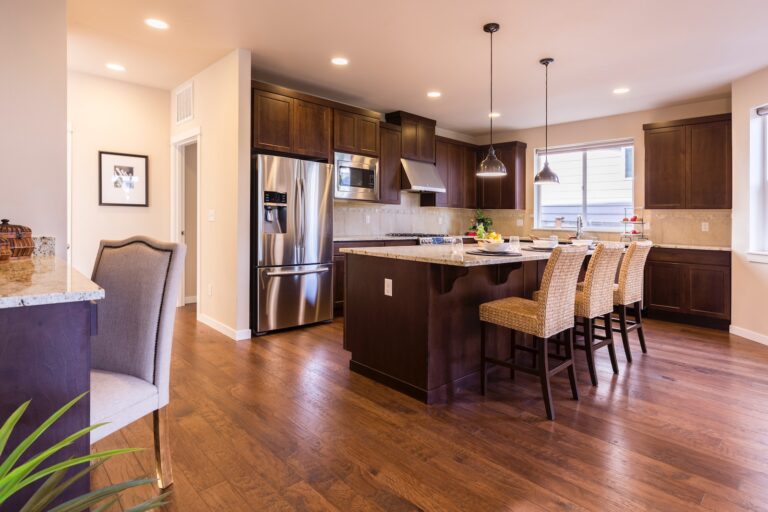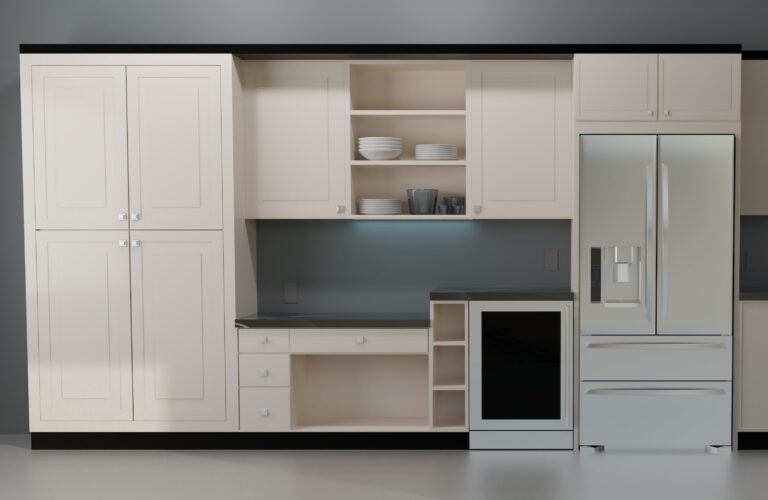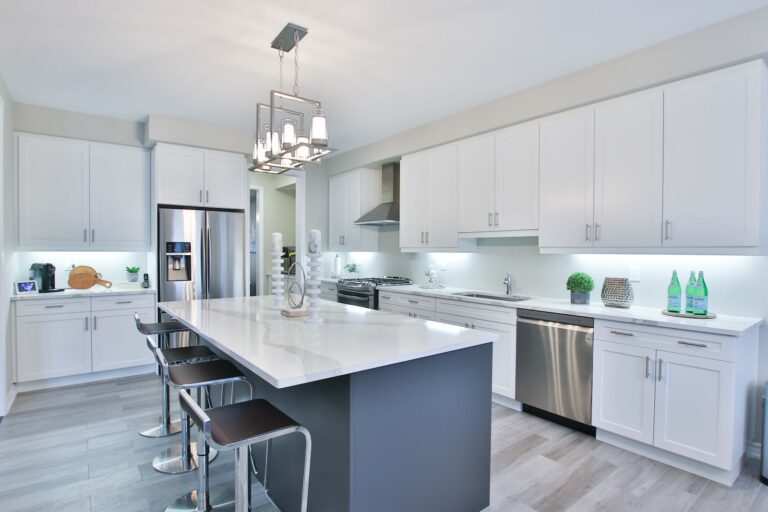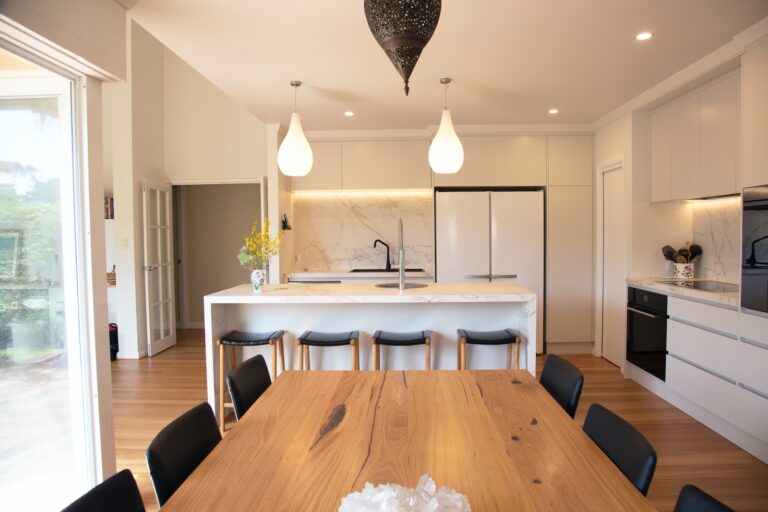Is Installing Kitchen Cabinets Hard?
Are you planning to upgrade your kitchen and install new cabinets? But the thought of installing them yourself is hindering you from doing so? You are not alone! Many homeowners find themselves intimidated by the idea of installing kitchen cabinets, but with the right tools and knowledge, it can be a manageable task.
Installing kitchen cabinets can seem like a daunting task, but with proper planning and some basic carpentry skills, it’s a job that can be completed by anyone. In this article, we will explore some common questions about installing kitchen cabinets and provide tips on how to make the process as easy as possible. So, let’s dive in and get started!

Is Installing Kitchen Cabinets Hard?
When it comes to home improvement projects, installing kitchen cabinets can be a daunting task for many homeowners. While it may seem like a difficult job, the truth is that with the right tools and some basic knowledge, anyone can install kitchen cabinets. In this article, we will explore the process of installing kitchen cabinets and answer the question: is installing kitchen cabinets hard?
Tools You Will Need
Before you begin installing kitchen cabinets, you will need to gather the necessary tools. Here are some of the tools you will need:
- Screwdriver
- Drill
- Tape measure
- Level
- Saw
- Clamps
Once you have all the necessary tools, you can begin the process of installing your kitchen cabinets.
Steps for Installing Kitchen Cabinets
Installing kitchen cabinets can be broken down into several basic steps. Here is an overview of the process:
- Remove old cabinets
- Measure and mark the wall
- Install upper cabinets
- Install lower cabinets
- Install cabinet doors
- Install cabinet hardware
Removing Old Cabinets
Before you can install new kitchen cabinets, you will need to remove the old ones. This involves removing the cabinet doors, drawers, and hardware. Once the cabinets are empty, you can remove them from the wall.
Measuring and Marking the Wall
After removing the old cabinets, you will need to measure and mark the wall for the new cabinets. This involves finding the highest point on the floor and marking a level line on the wall.
Installing Upper Cabinets
Once the wall is marked, you can begin installing the upper cabinets. This involves securing the cabinets to the wall with screws and making sure they are level.
Installing Lower Cabinets
After the upper cabinets are installed, you can move on to installing the lower cabinets. This involves securing the cabinets to the floor and making sure they are level.
Installing Cabinet Doors
Once the cabinets are installed, you can add the doors. This involves attaching the hinges to the cabinets and then attaching the doors to the hinges.
Installing Cabinet Hardware
Finally, you can add the cabinet hardware, such as knobs and handles. This involves drilling holes in the doors and drawers for the hardware and then attaching it.
Benefits of Installing Kitchen Cabinets
While installing kitchen cabinets may seem like a daunting task, it can offer several benefits. Here are some of the benefits of installing kitchen cabinets:
- Increased storage space
- Improved organization
- Enhanced aesthetics
Final Thoughts
While installing kitchen cabinets may seem like a difficult job, it is something that anyone can do with the right tools and some basic knowledge. By following the steps outlined in this article, you can install kitchen cabinets and enjoy the benefits they offer. So, is installing kitchen cabinets hard? No, it’s not, as long as you approach the job with the right attitude and tools.
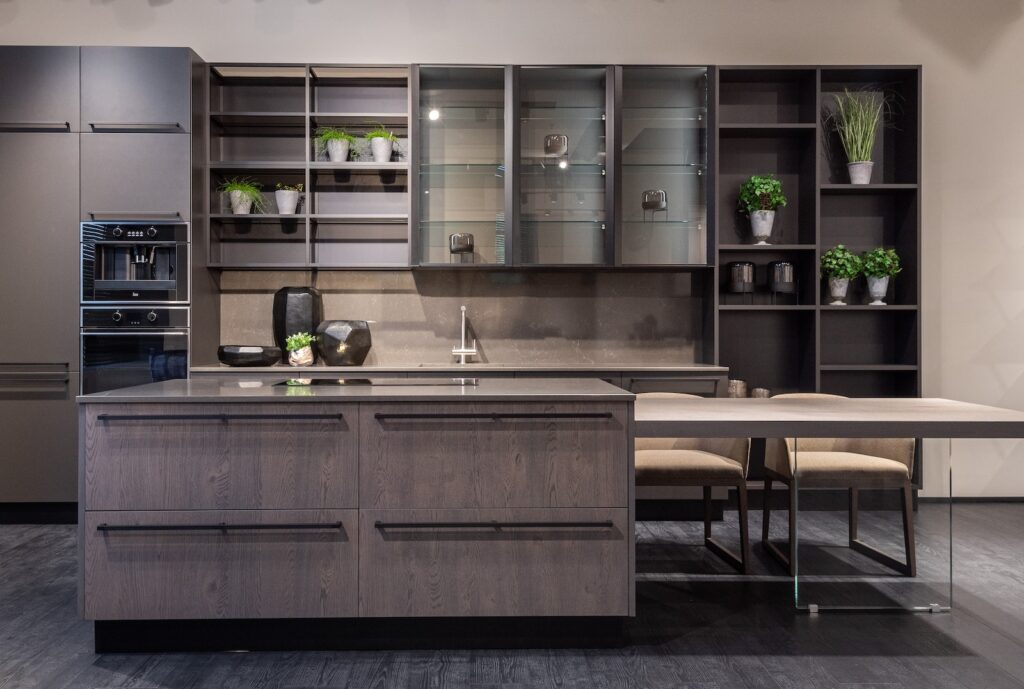
Frequently Asked Questions
What tools do I need to install kitchen cabinets?
Installing kitchen cabinets requires basic tools like a measuring tape, level, drill, screwdriver, hammer, and saw. You may also need a jigsaw, a circular saw, and a miter saw if you’re planning to cut the cabinets to fit odd spaces. To ensure a smooth installation process, it’s best to have all the necessary tools before starting the project.
What steps should I follow when installing kitchen cabinets?
The first step in installing kitchen cabinets is to measure and mark the wall where the cabinets will be installed. Next, locate the studs in the wall and mark their locations. After that, you can begin installing the cabinets by attaching a ledger board to the wall to support the cabinets. Once the ledger board is in place, you can then attach the cabinets to the wall and to each other. Finally, you can install the cabinet doors and drawers.
Do I need to hire a professional to install kitchen cabinets?
While it is possible to install kitchen cabinets yourself, it can be a challenging task, especially if you have no experience with carpentry or woodworking. If you’re not confident in your abilities, or if you’re working with expensive or custom cabinets, it’s best to hire a professional. A professional can ensure that the cabinets are installed correctly and that they look great.
How long does it take to install kitchen cabinets?
The length of time it takes to install kitchen cabinets depends on a variety of factors, including the size of the kitchen, the complexity of the installation, and the experience of the installer. In general, a simple installation can take anywhere from one to three days, while a more complex installation can take up to a week or more.
What are some common mistakes to avoid when installing kitchen cabinets?
One of the most common mistakes when installing kitchen cabinets is not measuring correctly. It’s important to measure the space accurately and to double-check your measurements. Another mistake is not properly securing the cabinets to the wall. This can cause the cabinets to sag or fall off the wall over time. Finally, not using the right tools or not following the manufacturer’s instructions can also lead to mistakes during the installation process.

In conclusion, installing kitchen cabinets can be a challenging task, but it’s not impossible. With the right tools, preparation, and a little bit of patience, you can easily install your kitchen cabinets without any professional help.
Firstly, it’s important to ensure that you have all the necessary tools and materials before you start the installation process. This will help you avoid any unnecessary delays or mistakes during the installation process.
Secondly, it’s crucial to measure everything accurately to ensure that your cabinets fit perfectly. You should also take into consideration any electrical or plumbing lines that may interfere with the installation process.
Lastly, take your time and be patient throughout the process. Installing kitchen cabinets can be time-consuming, but the end result is worth the effort. With these tips, you should be able to install your kitchen cabinets successfully and enjoy your new kitchen in no time!

